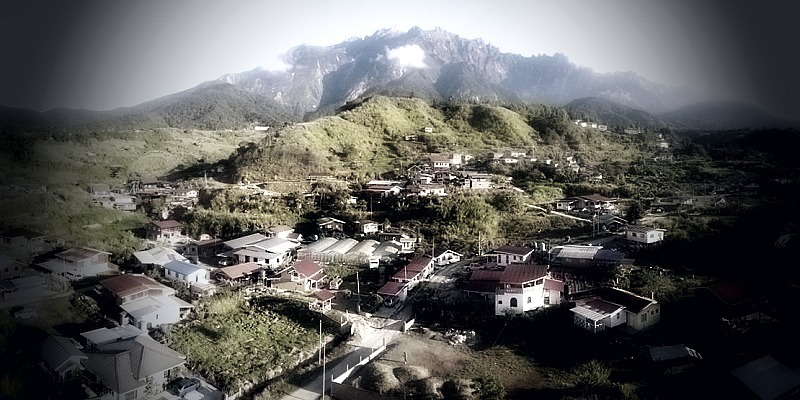Local authorities have been entrusted with enormous fiscal allocations from the federal government or local government revenue which could end up in the pockets of corrupt officials in the absence of supervision from democratically elected district and municipal councilors.
The 2020 census showed that after the country’s urban population outnumbered rural population (50.7% to 49.3%) for the first time in 1991, the urban-rural population disparity had since expanded to 75.1% to 24.9% three decades later.
If we were to take cue from the World Bank’s explanation of urban-rural population ratio as a major yardstick for a country’s level of development, urban population ratio of high-income countries stood at 81% in 2019, 53% for middle-income countries and as low as 33% for low-income countries, with a global average of 56%.
As such, in the eyes of WB, the rapid increase in Malaysia’s urban population ratio could be interpreted as a rapidly urbanizing phenomenon and a symbol of prosperity.
Indeed, urban population enjoys relative advantage compared to rural population in terms of the standard of living, education facilities, infrastructure, public transportation, quality of healthcare services, technological advancement and household incomes, among other parameters.
In view of this, it is essential for governments worldwide to strive to close the widening urban-rural gap on the principle of “equitable development.”
Although such a gap here in Malaysia is not as wide as in China, perhaps we can consider emulating the more scientific approach adopted by Beijing authorities to specifically identify, assist, reform and manage the impoverished areas of that country, an initiative first mooted in November 2013.
The government’s priority is not to financially assist the poor, as B40 communities are found everywhere in this country, but rather to improve the quality of living in rural areas and make them more livable.
Statistics show that the degree of urbanization is lower in the states of Kelantan, Pahang, Perlis, Sabah and Sarawak, significantly lower than in Klang Valley or Penang.
That said, closing the urban-rural gap does not essentially imply relocating rural population to cities and towns just because urbanization is the natural trend in uplifting a country’s development status, unless the budgets involved in improving the quality of living or infrastructure investment to make rural areas more livable are too immense to redress existing safety concerns such as the regular occurrence of landslides and floods.
What the government can do is enhance the quality of living (electricity and water supply), availability of fair education opportunities, decent medical services, transport infrastructure as well as improvement in local government service delivery (through local elections).
For so many years we have been witnessing sad cases of infants having to be driven hundreds of miles to a hospital for urgent medical care, schoolchildren having to walk two hours across hilly terrains each day to reach school, and students having to climb a tree to secure Internet access while attending an online class… which have slowly become a norm as the cases pile up.
And since such incidents have become a norm today, change is imperative so as to reverse the ill destiny of rural residents.

Closing urban-rural gap and lifting the rural residents’ living standards is not something as easy as setting aside a meager annual budget of RM808.18 million for the rural and regional development ministry.
With the country’s rural population at 8.1 million as of 2020 based on the latest census, we would like to propose to the unity government to set up a special committee that will spearhead the development of rural areas, with the participation of other ministries as well, including the agriculture and food security ministry (with an annual budget of RM2.38bn), natural resources, environment and climate change ministry (RM840m), transport ministry (RM770m), health ministry (RM17.05bn), local government development ministry (RM880m) and education ministry (RM2.5bn).
All the above allocations have been adopted under the “mini budget,” and it is hoped that the special committee will implement the targeted programs to help lift the living standards of rural people while making sure that public funds will not be channeled into the pockets of greedy officials.
To stem corruption and malpractice at local government level, perhaps it is time for the unity government to seriously consider enacting local authority elections which have been abruptly halted since 1965 to be substituted by political appointments made through state governments.
These appointed minor officials are responsible for a broad array of local services such as garbage disposal, unclogging drains and waterways, road maintenance and commercial license application.
Although these officials have only very limited scope of jurisdiction and powers, their services are of tremendous importance to the quality of living of local residents. Unfortunately, many of our drains remain clogged today, our roads badly potholed, so much so that these have now become “major responsibilities” of our elected MPs and assemblymen!
Corruption at local government level has become so rampant in the absence of an accountability mechanism in the form of local government elections.
From 2014 through 2019, the MACC received a total of 1,871 counts of complaints involving corruption and bribery on the part of local government officials.
Local authorities have been entrusted with enormous fiscal allocations from the federal government or local government revenue which could end up in the pockets of corrupt officials in the absence of supervision from democratically elected district and municipal councilors, and this will invariably hamper the unity government’s effort in busting corruption.
Additionally, with urban Malay population on the rise, politicians can no longer exploit the racial factor as an excuse not to impose local elections.
According to the latest population census, bumiputras made up the bulk of the country’s urban population at 14.1 million (62.6%), followed by Chinese at 6.4 million (28.6%), Indians at 1.8 million (8.1%) and others at 200,000 (0.7%).
ADVERTISEMENT
ADVERTISEMENT


































